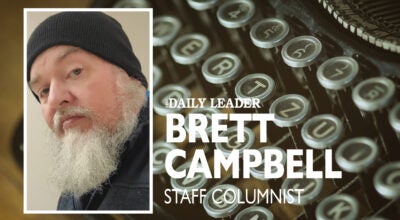Report says state pension funding too low
Published 11:23 pm Monday, April 24, 2017
A new report says that even if Mississippi’s public employee pension system was meeting investment assumptions, governments still aren’t putting away enough money to whittle down debt from previous pension underfunding.
The study, released last week by the Pew Charitable Trusts, raises questions about the long-term course of the Public Employees Retirement System, though the system has enough money to pay years’ worth of benefits even if governments and employees didn’t put in another penny.
“You’ve heard me say, and I still believe, we’re not in a crisis,” said outgoing PERS Executive Director Pat Robertson. “Are there concerns? Yes.”
PERS covers state employees, public school teachers, city and county employees, and those who work for public universities and community colleges.
The Pew report tries to measure whether contributions from employers and employees are enough to reduce the gap between assets and benefits owed if investment expectations are met. While 32 states did reduce that debt in 2015, the year the Pew report covers, Mississippi fell short, putting in only 97 percent of what’s needed.
“Overall, states are still contributing less than they should be toward pensions,” David Draine, a senior researcher at Pew, told reporters on a conference call last week.
That gap between assets and all benefits owed — the Mississippi plan’s unfunded liability — increased to $16 billion in 2015, in part because the plan lowered its assumed rate of return on investments to 7.75 percent a year, meaning the plan’s actuaries assume it will need larger contributions to make up the gap. The unfunded liability increased again to $16.8 billion in 2016, meaning PERS only has 60 percent of the money it needs to pay current and future benefits.
Some observers of public pension systems find the emphasis on paying down accumulated debt in pension systems misplaced, saying it’s an artificial crisis created by accounting rules.
“Ultimately the best argument against the current rules is that following these rules is not necessary to keep the checks from bouncing,” wrote Tom Sgouros in a report for the Haas Institute at the University of California, Berkeley.
PERS changed how it operates in 2011, trying to bring stability to how much it asked employers to pay. It locked in a contribution rate of 15.75 percent of payroll, aiming to use much of that money to chip away at its unfunded liability. The idea was that by 2042, PERS would have enough assets to meet 80 percent of its total liabilities. But actuaries told the PERS board last year that it had fallen off track from meeting the goal, and current board policy calls for the board to mandate higher contribution levels from employers if the pension plan is off track for two years in a row.
That may be easier said than done, though, as shown by experience with one of the smaller PERS funds. The board of the $312 million Mississippi Highway Safety Patrol Retirement System was supposed to mandate higher contributions from the Department of Public Safety this year, but the board agreed to put off that mandate until 2018. Robertson said there were concerns that higher contributions could eat into the agency’s ability to provide services.
That’s because the board can mandate higher contributions, but can’t force lawmakers to appropriate enough money to schools and agencies to cover the costs. Robertson said she feared “legislative pushback” if higher contribution rates were mandated for the main fund.
“I don’t think we can raise the contribution rate any higher than we are at 15 and three-quarters,” she said. “It’s a pretty expensive plan for the employer.”
Jeff Amy has covered politics and government for The Associated Press in Mississippi since 2011. Follow him on Twitter at jeffamy.



